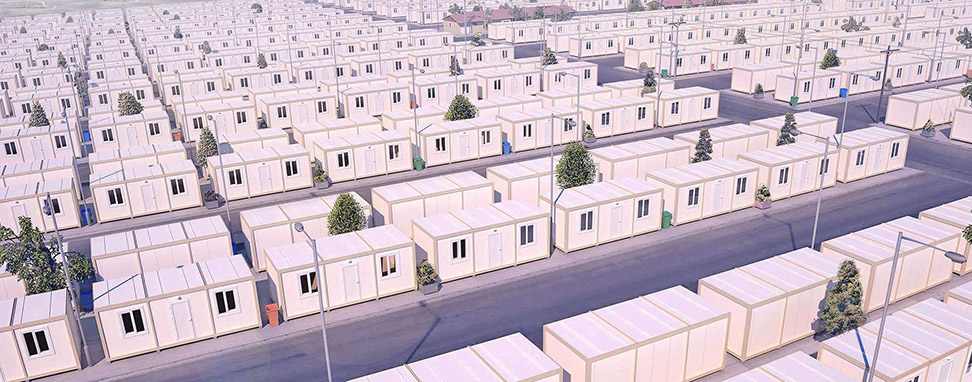The materials used for the construction of flatpack container houses are crucial in determining their durability, comfort, insulation, and overall quality. Here’s a detailed overview of the typical materials involved:
Structural Materials
Steel Framework
Description: The primary structure of the container, providing strength and durability.
Types: Often corten steel (weathering steel), which is corrosion-resistant and designed to withstand harsh environmental conditions.
Wood
Usage: Can be used for internal framing, flooring, and certain decorative elements.
Types: Plywood, treated lumber, and engineered wood products like OSB (Oriented Strand Board).
Insulation Materials
Spray Foam Insulation
Description: Expands to fill gaps and provides excellent thermal and sound insulation.
Types: Closed-cell (more rigid and moisture-resistant) and open-cell (less dense and more flexible).
Rigid Foam Insulation

Description: Boards of insulation used in walls, floors, and ceilings.
Types: Polystyrene (EPS, XPS) and polyurethane.
Fiberglass Insulation
Description: Traditional batt or roll insulation placed between studs or joists.
Types: Various R-values depending on thickness and density.
Exterior and Interior Finishes
Exterior Cladding
Steel Panels: Often the exterior of the original shipping container is maintained.
Wood Siding: For aesthetic purposes, providing a traditional or rustic look.
Composite Panels: Durable, weather-resistant panels often made of fiber cement or metal composites.
Interior Wall Finishes
Drywall (Gypsum Board): Common for interior walls, providing a smooth, paintable surface.
Wood Paneling: Adds a warm, natural look and can be used for both walls and ceilings.
Plywood: Often used for a more industrial or modern aesthetic.
Flooring
Plywood Subfloor: Provides a sturdy base layer.
Finished Flooring: Options include vinyl, laminate, hardwood, and tile.
Windows and Doors
Windows
Double-Glazed Windows: Provides better insulation and soundproofing.
Types: PVC, aluminum, or wood frames.
Doors
Steel Doors: Durable and secure, often used for exterior access.
Wooden or Composite Doors: Used for interior spaces or aesthetically pleasing exterior entrances.
Roofing Materials
Metal Roofing
Description: Durable, weather-resistant, and long-lasting.
Types: Corrugated metal panels or standing seam metal roofing.
Insulated Roofing Panels
Description: Combine insulation and weather protection in one product.
Types: Often have a core of rigid foam insulation.
Plumbing and Electrical Materials
Pipes and Fittings
Types: PVC, PEX for plumbing, and galvanized steel or copper for specific applications.
Wiring and Electrical Components
Description: Includes electrical wiring, outlets, switches, and breaker panels.
Types: Copper or aluminum wiring, standard residential-grade electrical components.
Insulation and Sealing
Weatherstripping and Seals
Description: Used around windows, doors, and other openings to prevent drafts and water intrusion.
Types: Rubber, foam, or silicone-based products.
Sustainable and Eco-Friendly Options
Recycled Materials
Description: Using recycled or repurposed materials to minimize environmental impact.
Types: Recycled steel, reclaimed wood, and other sustainable materials.
Green Roofs and Solar Panels
Description: Incorporating vegetation or renewable energy solutions to enhance sustainability.
Types: Modular green roof systems, photovoltaic solar panels.
Fire Safety and Compliance
Fire-Resistant Materials
Description: Ensures the structure meets safety regulations.
Types: Fire-rated drywall, fire-resistant insulation, and intumescent coatings for steel.
By carefully selecting these materials, flatpack container houses can be constructed to meet high standards of durability, comfort, energy efficiency, and aesthetic appeal. Each material choice impacts the overall performance and quality of the finished home.








